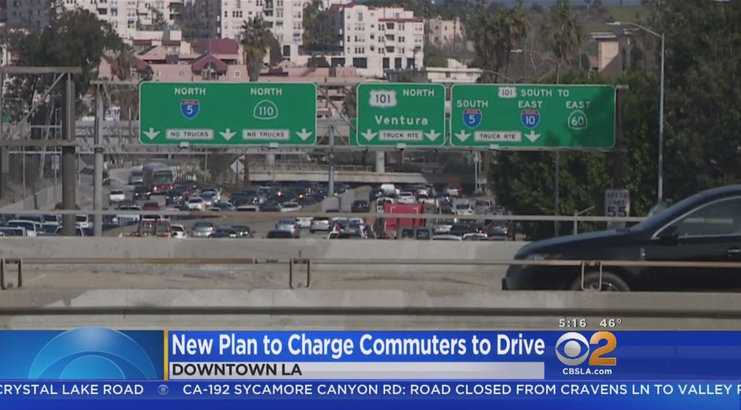CommentsLA WATCHDOG--“This is the eradication of congestion.” Phillip A. Washington, Metro Chief Executive.
The Metropolitan Transportation Authority is considering congestion pricing which, if approved by the voters, would charge motorists to drive on our freeways and streets. This new tax is intended ease traffic on our roadways and reduce the County’s carbon foot print by cutting down on the emission of greenhouse gases that fuel climate change.
Depending on the final plan, the revenue generated by this new tax may also be applied to offering free fares to all riders, especially now that ridership is declining, contrary to the statements made by the political class and transportation advocates when they were promoting Measure M two years ago.
The tax may also finance the $26 billion shortfall in funding for the Twenty-Eight by ’28 plan that was introduced by Mayor Eric Garcetti shortly after the voters approved Measure M, a half cent increase in our sales tax, in November 2016. This plan, now known as Re-Imagining of LA County, will accelerate the completion of eight projects in time for the 2028 Olympics at a cost of $26.2 billion. This includes almost $9 billion for the Sepulveda Transit Corridor.
The congestion tax will also help, indirectly, fund Metro’s growing bureaucracy, higher salaries and benefits for its 9,900 employees, and its ever-increasing contributions to its pension and other post-retirement employment benefit plans. It may also pick up some of the City’s expenses for the Olympics.
There are three concepts that are being considered.
Cordon pricing creates a boundary around a central district (DTLA, Hollywood, Century City, Santa Monica, Glendale, Burbank, Pasadena) and charges vehicles to cross the boundary. This will raise $12 billion over the next decade, not enough to fund the Re-Imagining LA County plan.
The VMT model dings motorists on vehicle miles travelled. Charges may vary based on location and time of day. This will raise $103.5 billion over the next ten years, or more than $10 billion a year.
Corridor pricing would charge drivers on high congestion freeways and streets based on the miles travelled in the corridor. This will raise $52 billion over ten years, or $5.2 billion a year.
Metro and its political allies are promoting the congestion pricing, citing the eradication of congestion, climate change, free fares, and the Olympics. But no consideration is being given to the financial impact on the residents of the County or the ability of Metro to effectively manage the eight accelerated projects.
Assuming the Corridor alternative that will yield $5.2 billion a year, it is a 170% increase over the $3 billion in sales tax that we are paying pursuant to Proposition A (1980), Proposition C (1990), Measure R (2008), and Measure m (2016).
It is the equivalent of 34% increase in our property taxes.
Or it adds 3.75% to our already high sales tax of 9.5%, resulting in a 13.25% sales tax burden.
Ouch. Ouch. Ouch.
This does not even consider if the already inefficient Metro organization has the executive, administrative, and financial management, engineering capabilities, and trained work force to bring these additional eight projects in on time and on budget to say nothing of its existing projects.
Transportation in the County is also different from other major metropolitan areas. We do not have a core business district like New York City, Chicago, or Washington, DC, but many centers where businesses are concentrated that do not support huge investments in mass transit.
Metro’s Board of Directors (Mayor Garcetti and three of his appointees (including Councilmen Krekorian and Bonin), the five County Supervisors, and four other elected politicians) and the Metro staff must review and analyze the many alternative plans that alleviate congestion on our freeways and streets. At the same time, the Metro staff and the Board must determine the financial impact on drivers, especially that segment of motorists directly impacted by the new congestion taxes. And they must be transparent.
As for eradicating congestion, CEO Washington and the Board should not be overly ambitious. They and the voters need to realize that “the perfect is the enemy of the good.”
(Jack Humphreville writes LA Watchdog for CityWatch. He is the President of the DWP Advocacy Committee and is the Budget and DWP representative for the Greater Wilshire Neighborhood Council. He is a Neighborhood Council Budget Advocate. He can be reached at: [email protected].)
-cw
















